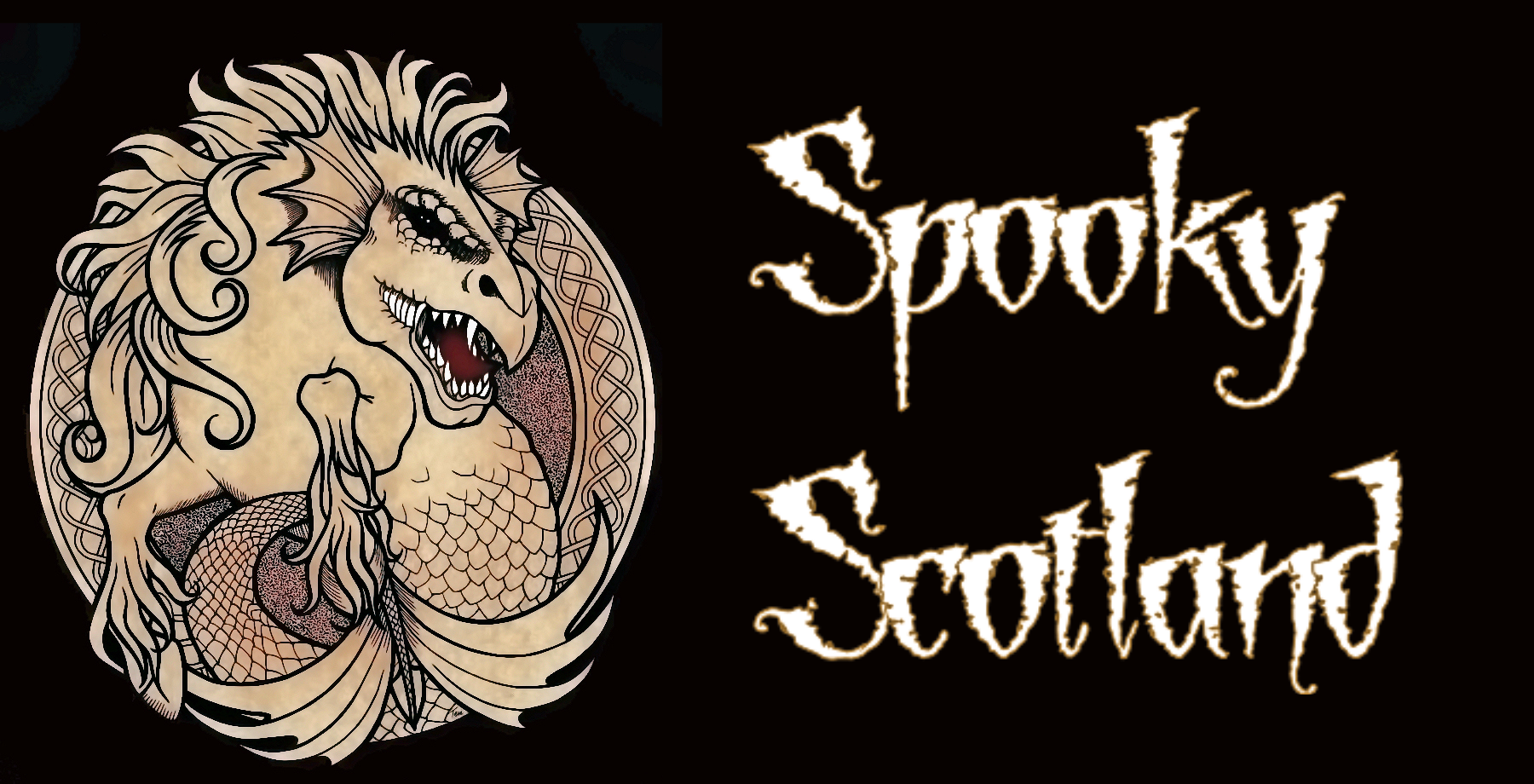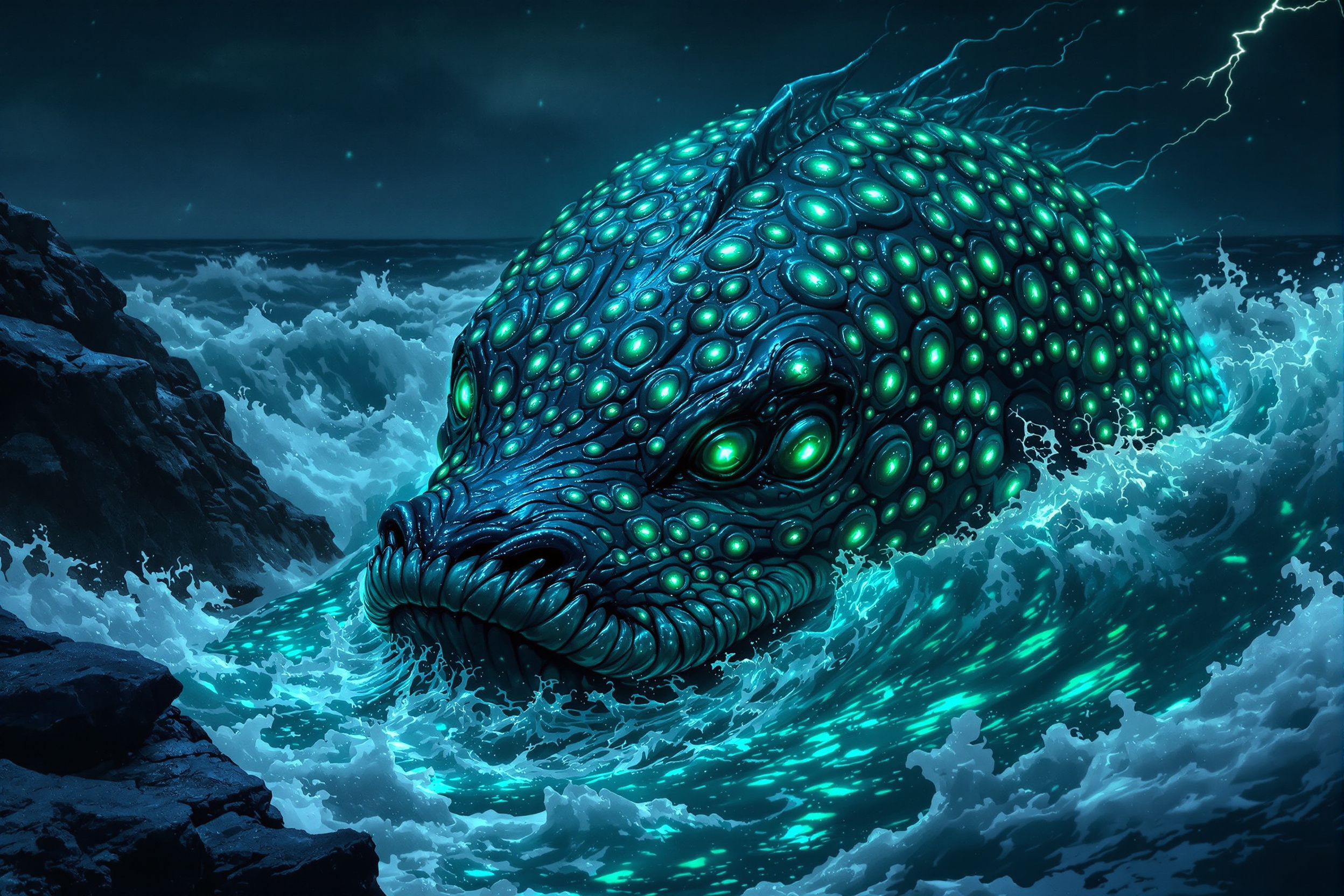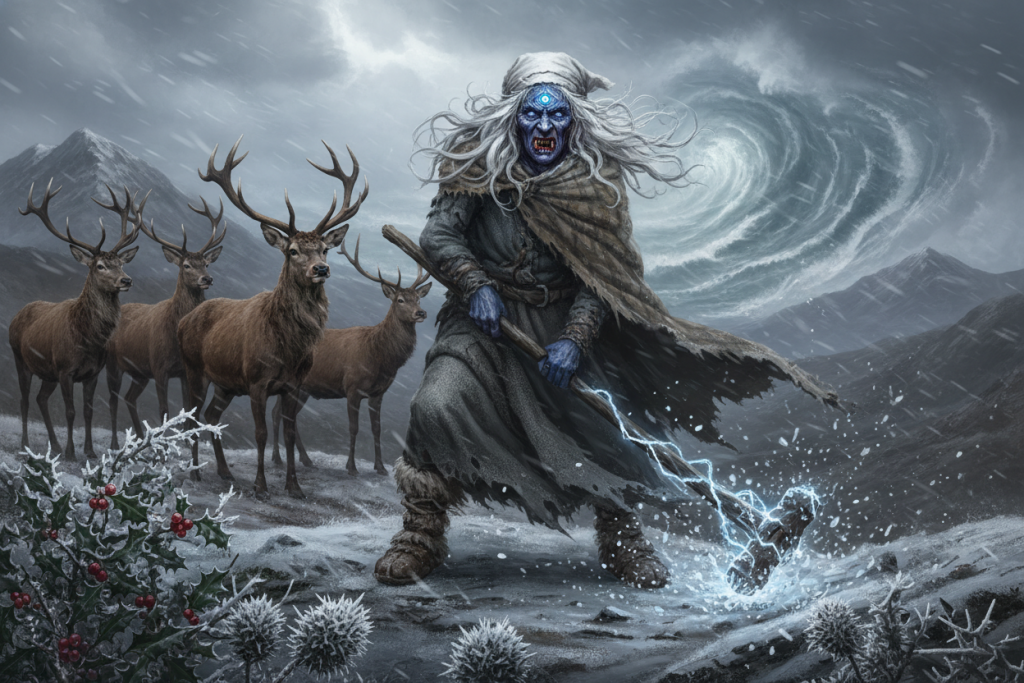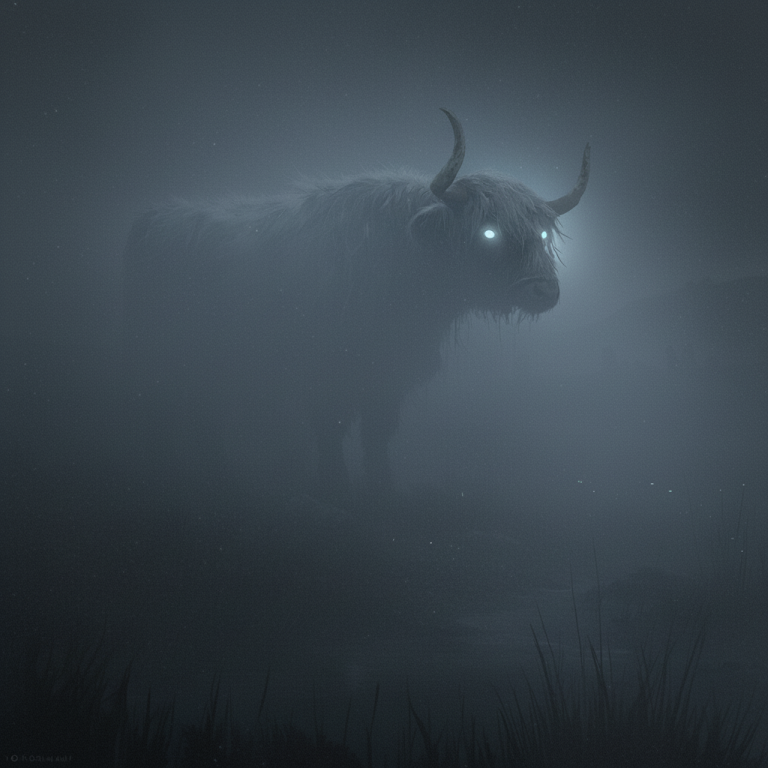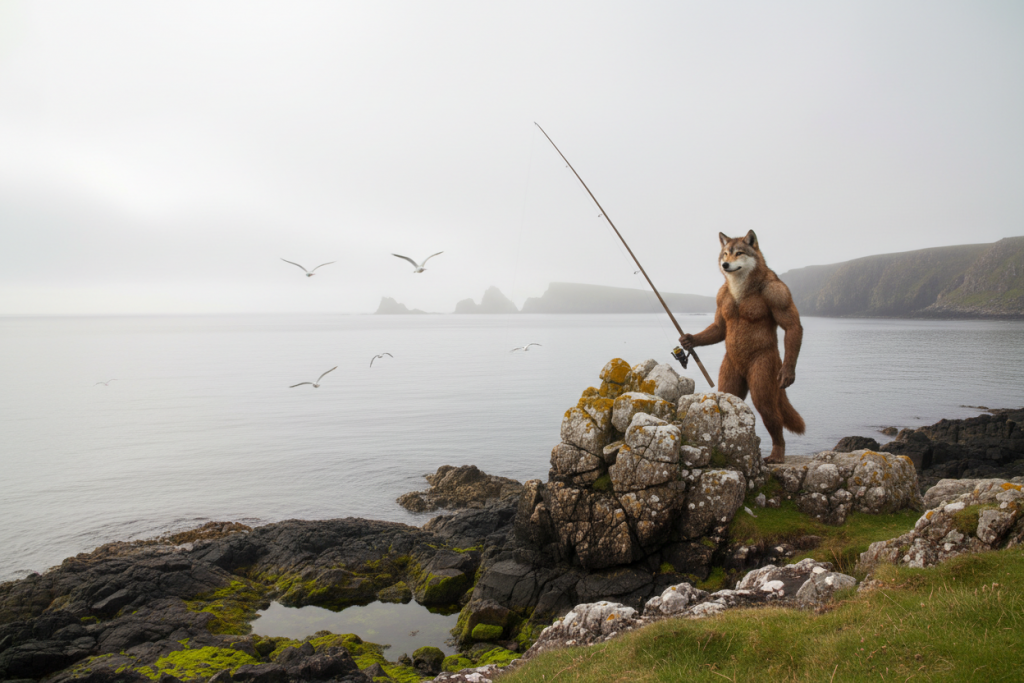Name pronunciation:
muh-REEL
General Information:
Mareel is a malevolent sea spirit from Shetland. In many accounts, it is described as a fairy animal or a marine devil that takes the form of a fish. It is strongly linked to the natural phenomenon of sea phosphorescence, which locals also call mareel. Because of this, people often report sightings during nights when the sea glows. In storms, witnesses say the Mareel becomes active and sings with wild delight when ships capsize. Therefore, it is considered an omen of danger and wrecks.
Appearance:
The Mareel looks like a large fish with a crest of flame along its back. Its most unsettling feature is the many eyes that cover its head. In some descriptions, it gleams or flashes like green fire in the dark, much like glowing sea-foam. Altogether, these details make it a striking and frightening presence.
Habitat:
People associate the Mareel with coastal waters around Shetland and northern Scotland. It appears most often when the sea is bright with phosphorescence. Locals say it can be seen amid glowing foam near cliffs, geos, and rocky headlands. During rough weather, it is said to follow waves and currents near treacherous channels and sea-stacks.
Behaviour:
The Mareel is extremely malevolent. It delights in bad weather and, according to tradition, sings or calls out in triumph when a ship founders. During storms, it becomes bolder. It seems to revel in chaos and appears as a warning sign that trouble is near. Although it does not bargain with humans, its presence is a clue to seek shelter, avoid sailing, and keep away from cliff edges.
Shape-shifting Ability:
While the Mareel is usually fish-like, some tellings imply it blurs with the glowing sea itself. Because of this, it can seem to stretch across breaking waves or vanish into foam. However, there are no strong traditions of it changing into a human form or another animal. Instead, it appears as a fish-shaped devil set within or alongside the luminous water.
Location in Scotland:
- Shetland, especially Yell and the northwest coastlines with cliffs and geos.
- Burgi Geo in northwest Yell is a key place mentioned in local lore.
- More broadly, northern Scottish waters where sea phosphorescence is visible.
Stories/ Sightings or Experiences:
Da Hallamas Mareel
From a Folktale shared by the late Lawrence Tulloch.
(Please note: some of the language below is in Shetland dialect. It is poetic and is kept as-is. “Hallamas” means Halloween.)
At the Burgi Geo in northwest Yell stand the remains of an Iron Age fort, set out on a headland with a narrow neck of land. Rows of standing stones lead towards it. However, one row leads the unwary over the cliff edge to their doom.
Long after the fort’s first builders were gone, a ruthless band of Vikings took it over. They preyed on the honest udallers of West-A-Firth, making the area wild and lawless.
As late autumn drew in, the children of West-A-Firth prepared for Hallamas. Wearing straw hats, they visited every house to collect money for the annual party. Yet one house was always missed: a lonely hovel in the hills, home to the Spaeman, Isaac Omand. He welcomed no one, spoke in riddles, and kept to himself.
The people trusted Mary with the collection money. A kind spinster who loved children, she, along with Martha Rassusson and Jenny Ninian, went to Glippapund to buy food for the festivities. All week, they baked fatty bannocks, currney buns, oven sliddericks and dumplings. They made tattie soup, churned butter, kirn milk and blaand. A lamb was butchered, and meat and mealy puddings were cooked.
Stolen Goods
But when Mary returned from a neighbour’s house, she found disaster. Robbers from Burgi Geo had raided her home and taken everything. The Oldest Udaller called a meeting, and folk came from Setter, the Neap, Graven and Vigon. No one dared face the Vikings. The risk was too great. With no better plan, they agreed to consult the Spaeman.
Sigurd Ollason and Tirval Ertirson went to see him. Isaac Omand seemed to be expecting them. A tiny, ragged man with a long grey beard, he gave them no chance to speak. In a shrill voice, he delivered a riddle:
“Da Burgi Geo men ir fat an greedy
While wis puir fok ir tin an needy
Bit ta mak things rite an weel
Ye maun öse da Hallamas mareel.”
He shut the door, leaving the men baffled. They returned and told the Oldest Udaller. After some thought, he replied that the only place to get mareel was the sea, so some of them must head to the rocks and fish.
Although sceptical, they did as told. As evening fell, they were astonished to see the mareel glowing in the water. The sea, the fish, and even the lines flashed with ribbons of fire.
On the way home, Sigurd had an idea. The robbers would surely come to steal the catch. So he got Tirval and others to skin piltocks and sillocks, and he asked the women for old blankets and linen. They sewed fish skins onto the cloth to capture the sheen of the mareel.
Six men put on the mareel-covered garments and set off towards Burgi Geo. They hid by the burn to watch for the raiders. In the moonlight, the mareel flashed like green fire.
Happy Hallamas Ending
Soon, the robbers arrived. Sigurd gave the shout. The six leaped up, shouting, jumping, and waving their arms. The glowing figures terrified the robbers, who turned and fled. In their panic, they followed the wrong line of standing stones and ran straight over the cliff.
In the days after, the West-A-Firth folk entered the fort, found it empty, and recovered many stolen goods. That year, they enjoyed the best Hallamas yet. From then on, they lived in greater peace and plenty. Locals still linked this victory to the mareel: both the glowing sea and, in older belief, the dangerous spirit of storm and wreck.
Notes and glosses:
- Hallamas = Halloween.
- Udallers = independent landholders.
- Piltocks and sillocks = local names for fish.
- Mareel = sea phosphorescence; also used for the feared marine spirit in some tellings.
Purpose of the myth or Legend:
The Mareel story warns coastal communities about storm dangers, treacherous cliffs, and predatory raiders. It ties a real natural sign—phosphorescent sea-foam—to a supernatural threat, so people take glowing seas and wild weather seriously. At the same time, the Hallamas tale shows how wit and unity can defeat cruelty. It explains local landmarks (standing stones, the geo, the fort) and strengthens community identity around Halloween customs. In short, it teaches caution at sea, respect for nature’s signals, and the power of collective actio
